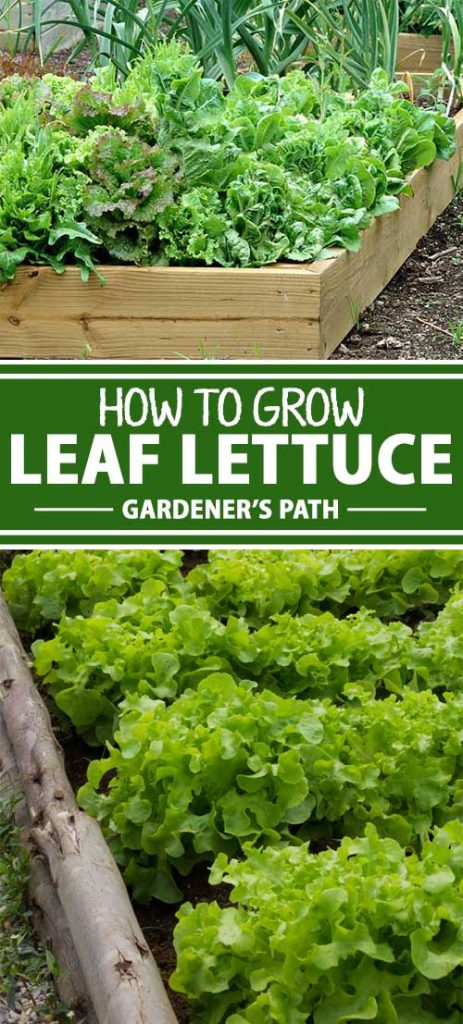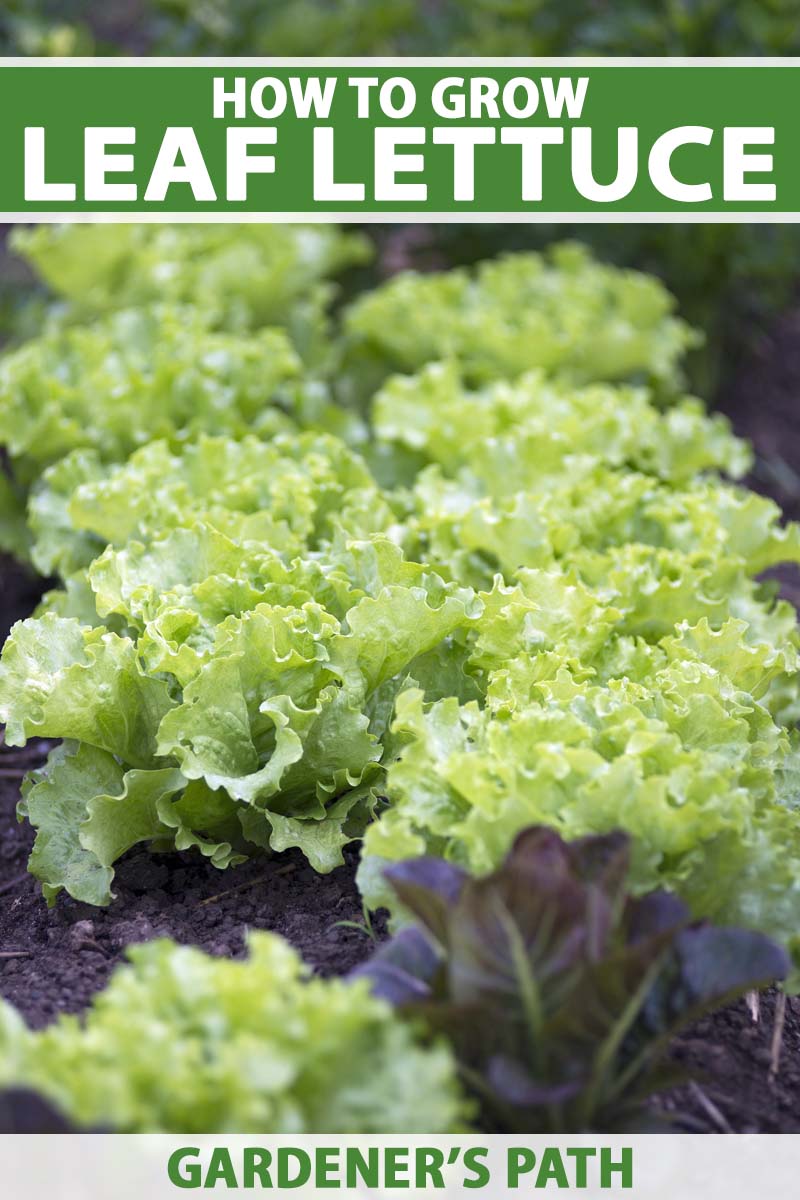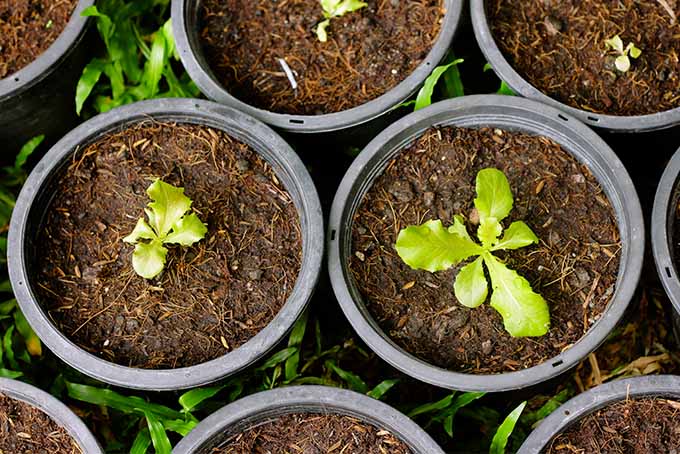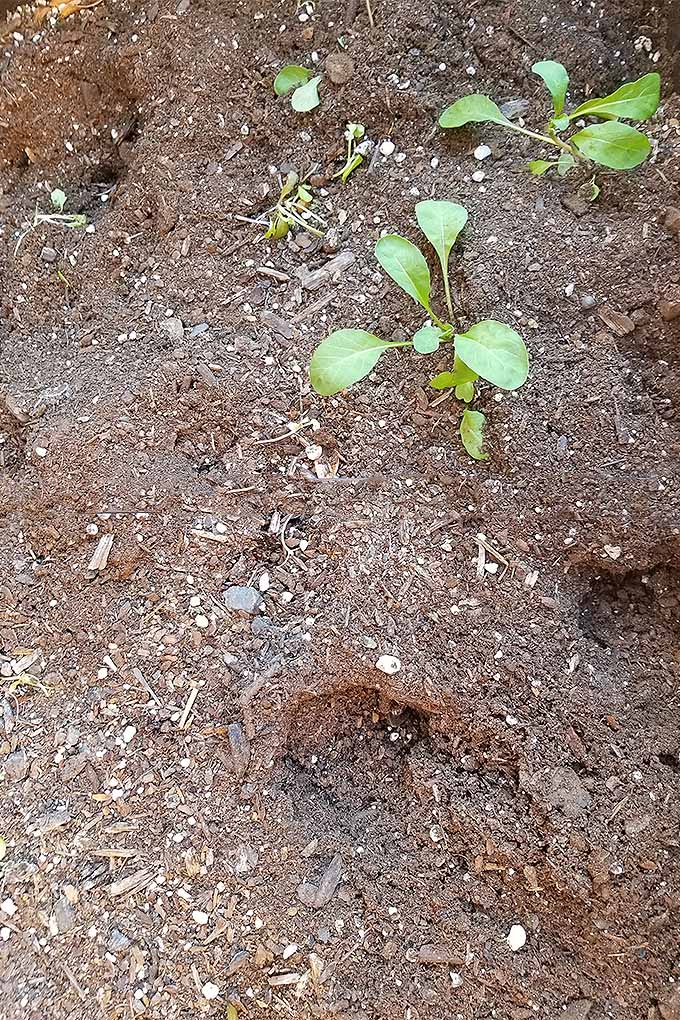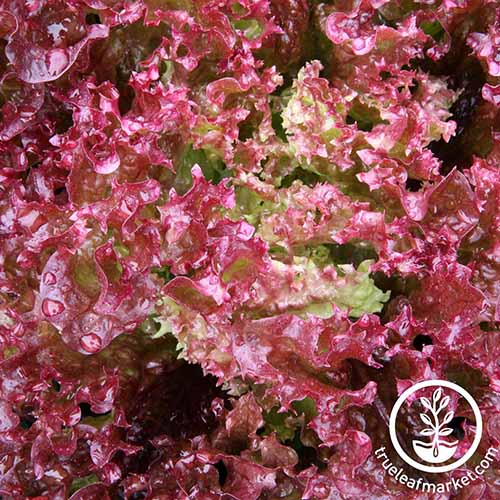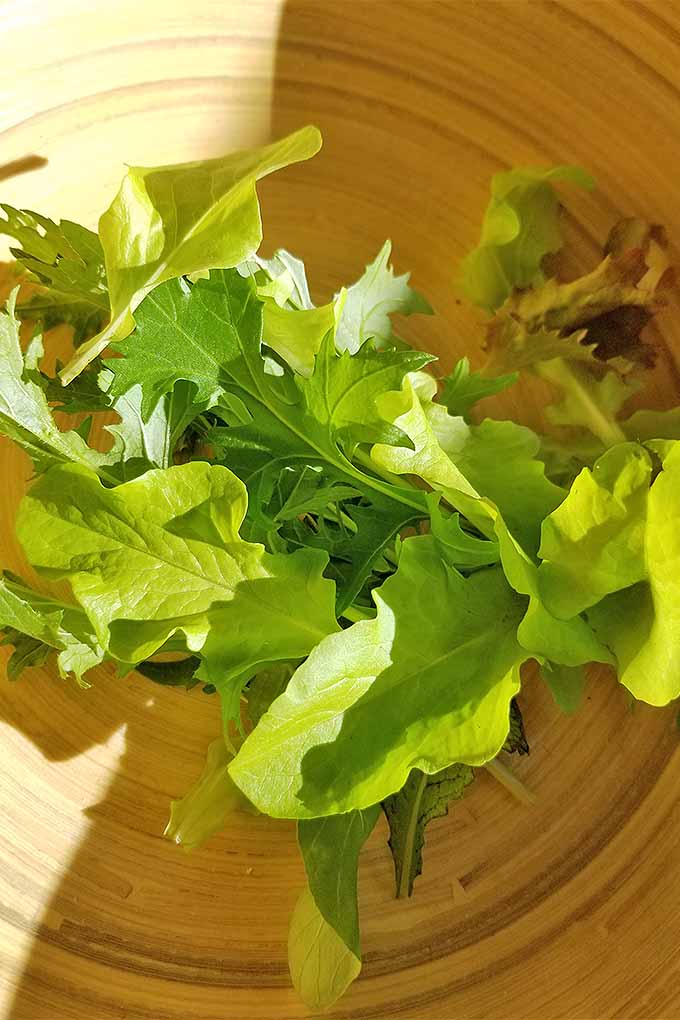Leaf lettuce refers to varieties that don’t produce any type of head. They are easier to grow than other varieties – including romaine, butterhead, and crisphead – and produce multiple harvests throughout the season. Homegrown lettuce is also more nutritious and flavorful than anything you will find at the grocery store. We link to vendors to help you find relevant products. If you buy from one of our links, we may earn a commission. Not to mention, very few garden tasks are more satisfying than assembling a freshly harvested salad. Individual plants require very little space, basic maintenance, and you can harvest leaves as needed once they reach a useable size. Available in a multitude of varieties and colors, leaf lettuces liven up your garden and your dinner table. Keep reading for more information on how to grow this cool season garden staple at home.
Take Care to Prepare the Bed
Taking a little more time to prepare the garden bed will have a big impact on your harvest. Most leaf lettuces can be planted in early spring as soon as the soil can be worked. So, it’s best to prepare the bed as soon as possible. Ideally, soil should be loamy, well draining, and rich in organic matter, which helps to maintain soil moisture. Optimal soil pH is between 5.8 and 6.5 for lettuces. Reach out to your local extension office to see if they offer soil tests. Seeds are incredibly tiny and you’ll have better germination rates in soil that is free of large clumps.
Plants are also fast growing and small, with shallow roots. As such, they are more susceptible to water-related stress, and are less vigorous in the presence of weeds. Stale seedbed cultivation is one proven method to reduce weed seeds. Prepare the soil a couple of weeks before planting garden crops. Once weeds begin to appear, lightly cultivate the soil so as to uproot the weeds, but not so heavily that new weed seeds are brought to the soil’s surface and given a chance to germinate. This method dramatically reduces the presence of weeds.
Sow, Water, Repeat
The key to delicious, tender leaves is to maintain a fresh supply of young plants. To do this, sow seeds successively. Start one batch of seeds indoors six weeks before your area’s average last spring frost date, or 8 weeks before the first average frost date in fall. Don’t forget to harden seedlings off before transplanting them into the garden. Direct sow another batch of seeds in the garden in a sunny location as soon as the soil is workable. Expect germination to occur within 7 to 10 days.
Since lettuce seeds are so small, it will be a challenge not to sow too many. Once seedlings are a couple of inches tall, thin them to about 4 to 8 inches apart, depending on the variety. A couple of weeks later, direct sow another batch. Cover seeds with 1/2 inch of soil and keep them moist, but not soaked. Overall, the idea is to plant multiple rows or groups of lettuces every two weeks throughout the growing season. This will ensure a continual supply of young plants for an optimal harvest. Older plants are more likely to bolt, and they usually develop bitter, tough leaves. Don’t hesitate to harvest entire plants before they pass peak harvest. This should be done before they mature, usually within 60 days. Get more tips on harvesting leaf lettuce here.
Pests and Diseases to Know About
Keep an eye out for aphids, which will hide on the undersides of leaves. Although populations can grow fast and seemingly come out of nowhere, aphids are easily controlled with the firm, frequent blast of a hose.
Planting onions or chives amongst lettuce is another great option to deter pests such as aphids. Cutworms are sneaky and do their damage at night. If you notice seedlings being mowed down at the base of the plant, these critters may be the culprit. Diatomaceous earth or finely ground eggshells sprinkled around plants can take care of cutworms and other soft-bodied pests, like slugs. Rabbits, squirrels, and deer also love to munch on young lettuce leaves. Fences or row covers are your best line of defense against these more obvious offenders. If you notice leaves starting to look scorched at the tips, plants may be affected by tip burn. This physiological condition is typically a result of inconsistent moisture levels, especially during dry spells. It could also be an indication of improper soil pH. Remember to water consistently, and keep an eye on the weather if you want your crops to thrive. Find more tips on dealing with lettuce pests here or identifying and treating lettuce diseases here.
Getting the Most out of Leaf Lettuce
All lettuces are considered cool season crops and perform best in temperatures ranging from 50 to 70°F. Once temperatures reach 80°F and nights become warm, plants are known to bolt and begin to flower. However, there are several long-lasting varieties that can be productive throughout the entire growing season in many areas. Similarly, there are some varieties that tolerate frosts better than others. Choosing the right variety for your area and season is key to getting the most out of your plants. If your goal is to grow leaf lettuce throughout the summer, choose heat tolerant varieties. Also, interplant lettuce with tall summer crops like peppers, corn, and tomatoes, to provide extra shade. Watering adequately is especially important for a productive crop. Shallow roots leave plants susceptible to water-related stress, so water frequently and to a depth of at least 6 inches. Be careful not to use a heavy hand when watering, since too much water can encourage disease. If possible, water in the morning so plants have a chance to dry off during the course of the day. A layer of organic mulch will help to maintain soil moisture, protect roots, and prevent weeds.
Season extension practices work well with leaf lettuce. Row covers and cold frames can allow you to start plants earlier in spring, and possibly even grow them throughout the winter in some areas. Row covers can also serve well in the heat of the summer to provide shade and delay bolting. Not to mention, plants can be grown under cover for the entire growing season as a way to prevent many pests from getting to them before you do. Leaf lettuces are great choices for growing in containers as well. Just keep in mind, you will most likely need to water container plantings more frequently.
Easy to Grow, Easy to Eat
Be sure to get a few things right and you’ll be enjoying fresh garden salads in no time. ‘Lollo Rosso’ lettuce (Lactuca sativa ‘lollo rossa’) is an Italian variety with ruffled, dark pink leaves that are green at the base. Sometimes spelled in the feminine i.e. ‘Lolla Rossa,’ you can choose which name you prefer.
‘Lollo Rosso’ Seeds This type does well in cooler regions, and is perfect for beginners since it’s known for being slow to bold. Seeds are available from True Leaf Market. A classic green salad lettuce, ‘Grand Rapids’ is a nice choice if you’re looking for something a little more traditional. This frilly-edged leaf type is resistant to tip burn, crisp, and tender. Seeds are available from True Leaf Market.
‘Grand Rapids’ Seeds Okay, we’ll give you one guess as to why this cultivar is known as ‘Oakleaf.’ This type reaches maturity in just 40 days, and Utah State University stands behind this pick, so it must be good.
‘Oakleaf’ Seeds You’ll love the pale green, tender leaves. Seeds can be purchased from True Leaf Market. Another favorite for beginners, ‘Black Seeded Simpson’ is simple to grow, and it can tolerate some sunshine.
‘Black Seeded Simpson’ Leaf Lettuce Seeds You’ll be enjoying this quick-to-mature variety in no time. Get seeds now from True Leaf Market. Well-prepared, weed-free soil that is well draining and rich in organic material will ensure healthy plants. Consistently moist soil makes for fast growing, happy lettuce. And successive plantings keep a supply of young, tender leaves at your fingertips throughout the season. Choose the right variety for your needs and you won’t be disappointed. Photos by Allison Sidhu, © Ask the Experts, LLC. ALL RIGHTS RESERVED. See our TOS for more details. Product photos via True Leaf Market. Uncredited photos: Shutterstock.

